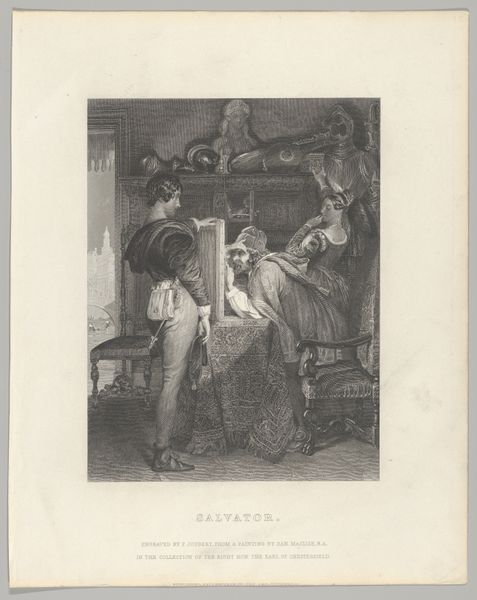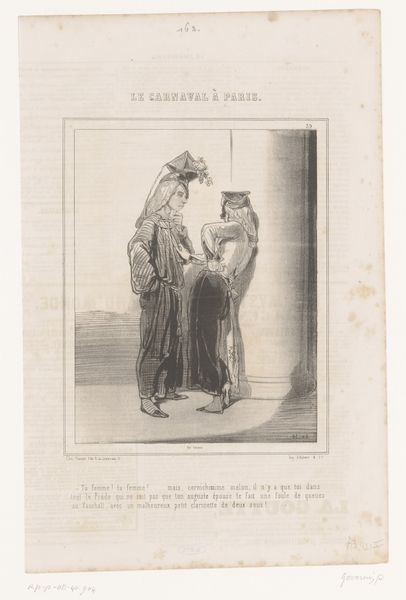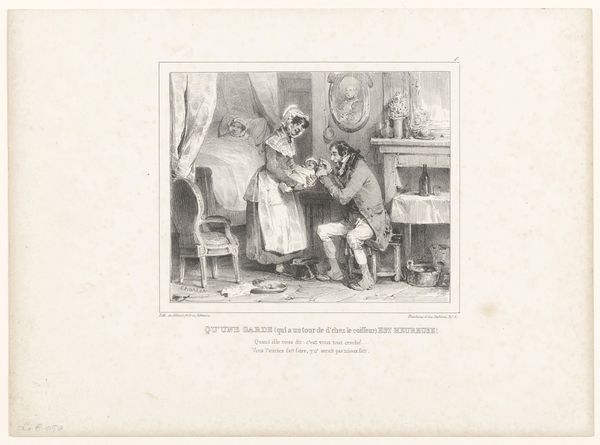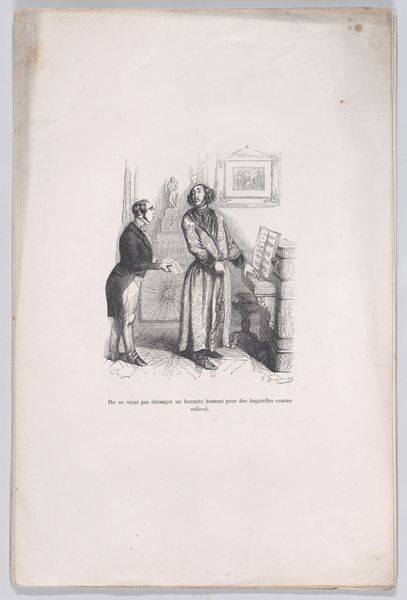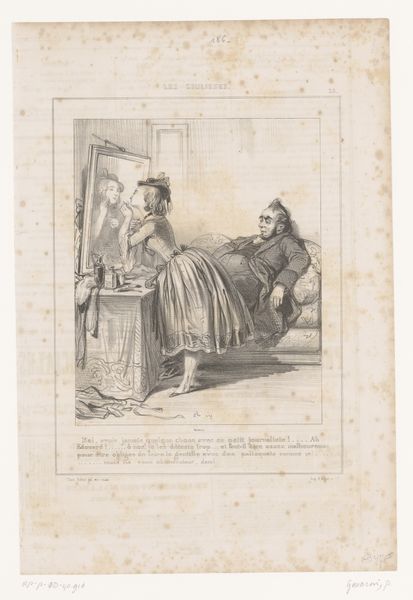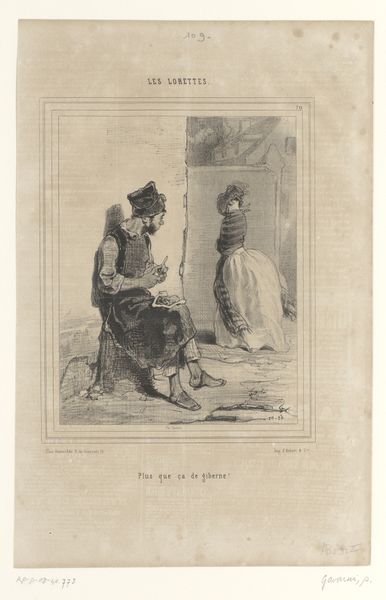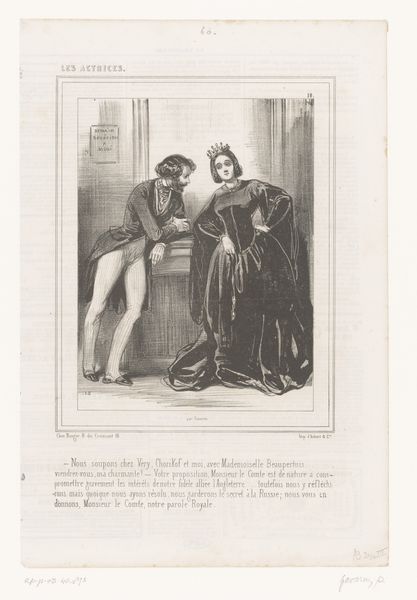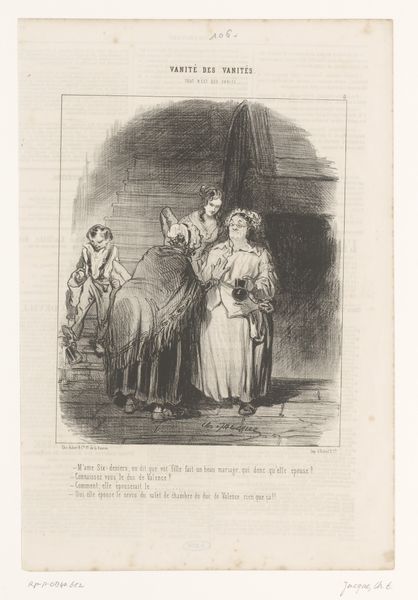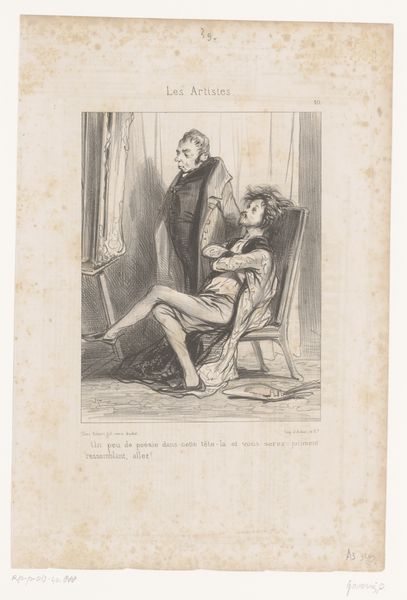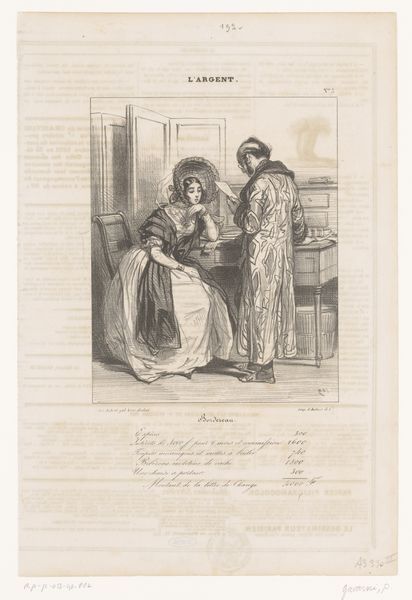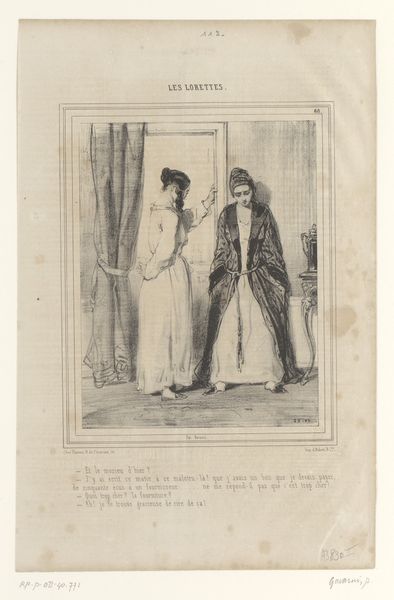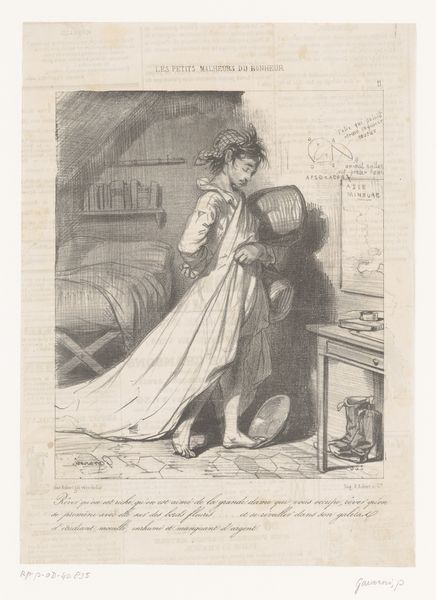
drawing, pen
#
portrait
#
pencil drawn
#
drawing
#
amateur sketch
#
light pencil work
#
pencil sketch
#
old engraving style
#
personal sketchbook
#
idea generation sketch
#
pencil drawing
#
romanticism
#
sketchbook drawing
#
pen
#
pencil work
#
genre-painting
Dimensions: height 363 mm, width 244 mm
Copyright: Rijks Museum: Open Domain
Curator: Before us, we have "Gevangene knuffelt zijn kind," or "Prisoner Hugging His Child," a poignant drawing created around 1840 by Paul Gavarni, here at the Rijksmuseum. Editor: My immediate feeling is one of profound intimacy against a backdrop of stark confinement. The contrast is… heartbreaking. You see that delicate pencil work and the incredibly fragile embrace, juxtaposed against the institutional grimness it suggests. Curator: Absolutely. Gavarni was deeply invested in depicting the lives of the marginalized. What strikes me is how he captures a sense of longing for freedom and normalcy through such a seemingly simple scene. This drawing, produced during a time of significant social upheaval in France, offers a window into the lived experiences of those impacted by incarceration. Editor: It's interesting you mention simplicity. Looking closer, the materials speak volumes. It’s just pencil and paper, humble means used to convey intense emotion. The quick lines show the process of thinking and the reality for prisoners with not having time. Curator: True. Gavarni's choice of medium further underscores the fragility of their existence, also how easy it could be for the elites to overlook prisoners. What do you make of the composition? The positioning of the figures within the room and his artistic skills suggests it would also touch wealthy people who commission art in Paris at that time. Editor: I find it intriguing. It highlights their close relationship between prisonners. Notice how they are holding each other to get the heat during winter but they still hide their face for showing their emotions... it all makes you wonder the production value of the materials and how artists use drawing back in the days. Curator: Yes. It definitely pushes us to contemplate how spaces shape identity and human relationships. Editor: In conclusion, by considering Gavarni's careful craft we learn more about the social inequalities and humanity under pressure from society during the 19th century. Curator: Indeed. Gavarni uses a relatively accessible style for all people to convey powerful societal messages in his "Prisoner Hugging His Child". It encourages reflections on the complexities of family, incarceration, and compassion, which still affects the present days.
Comments
No comments
Be the first to comment and join the conversation on the ultimate creative platform.
